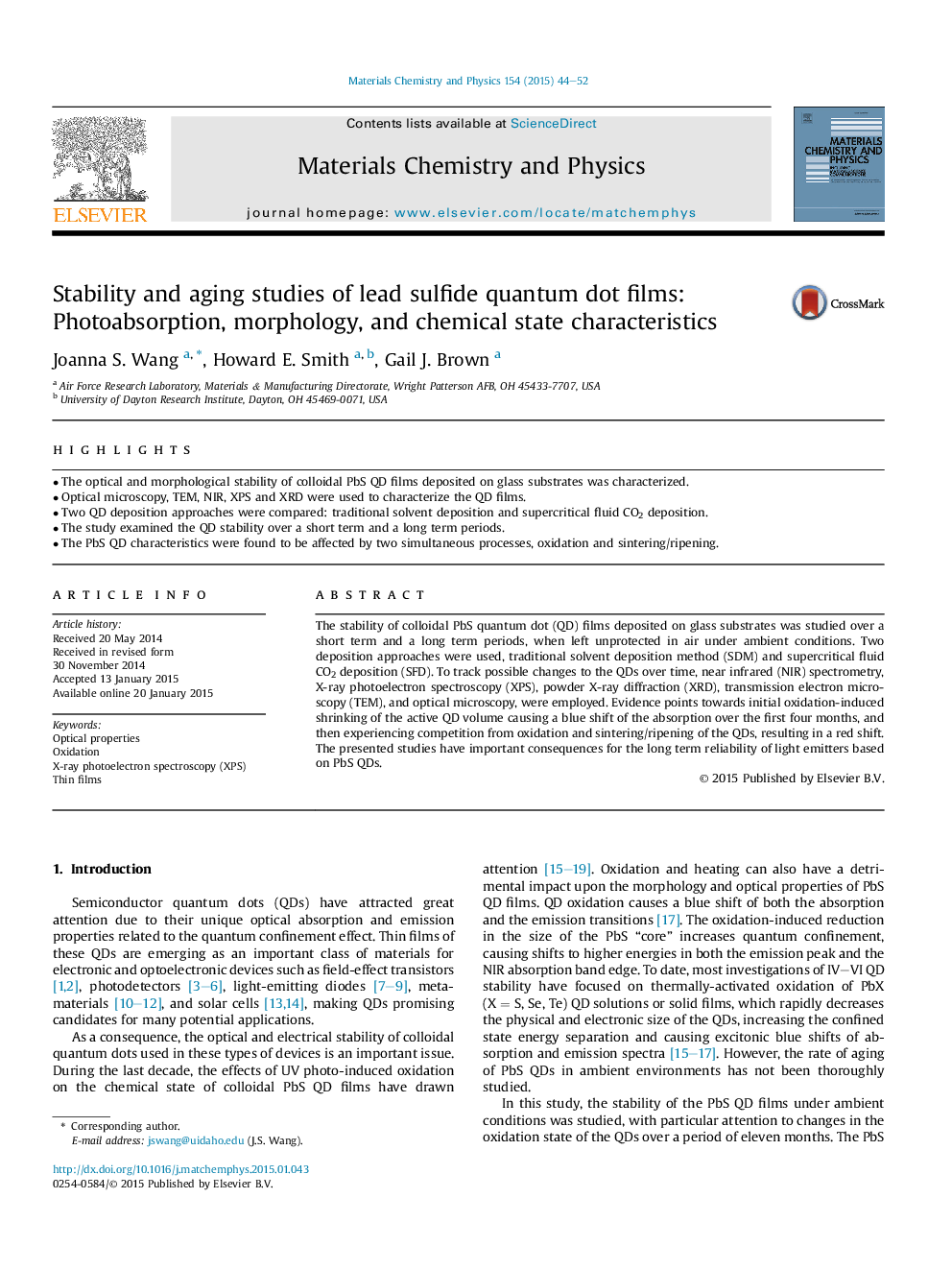| Article ID | Journal | Published Year | Pages | File Type |
|---|---|---|---|---|
| 1521485 | Materials Chemistry and Physics | 2015 | 9 Pages |
Abstract
The stability of colloidal PbS quantum dot (QD) films deposited on glass substrates was studied over a short term and a long term periods, when left unprotected in air under ambient conditions. Two deposition approaches were used, traditional solvent deposition method (SDM) and supercritical fluid CO2 deposition (SFD). To track possible changes to the QDs over time, near infrared (NIR) spectrometry, X-ray photoelectron spectroscopy (XPS), powder X-ray diffraction (XRD), transmission electron microscopy (TEM), and optical microscopy, were employed. Evidence points towards initial oxidation-induced shrinking of the active QD volume causing a blue shift of the absorption over the first four months, and then experiencing competition from oxidation and sintering/ripening of the QDs, resulting in a red shift. The presented studies have important consequences for the long term reliability of light emitters based on PbS QDs.
Related Topics
Physical Sciences and Engineering
Materials Science
Electronic, Optical and Magnetic Materials
Authors
Joanna S. Wang, Howard E. Smith, Gail J. Brown,
